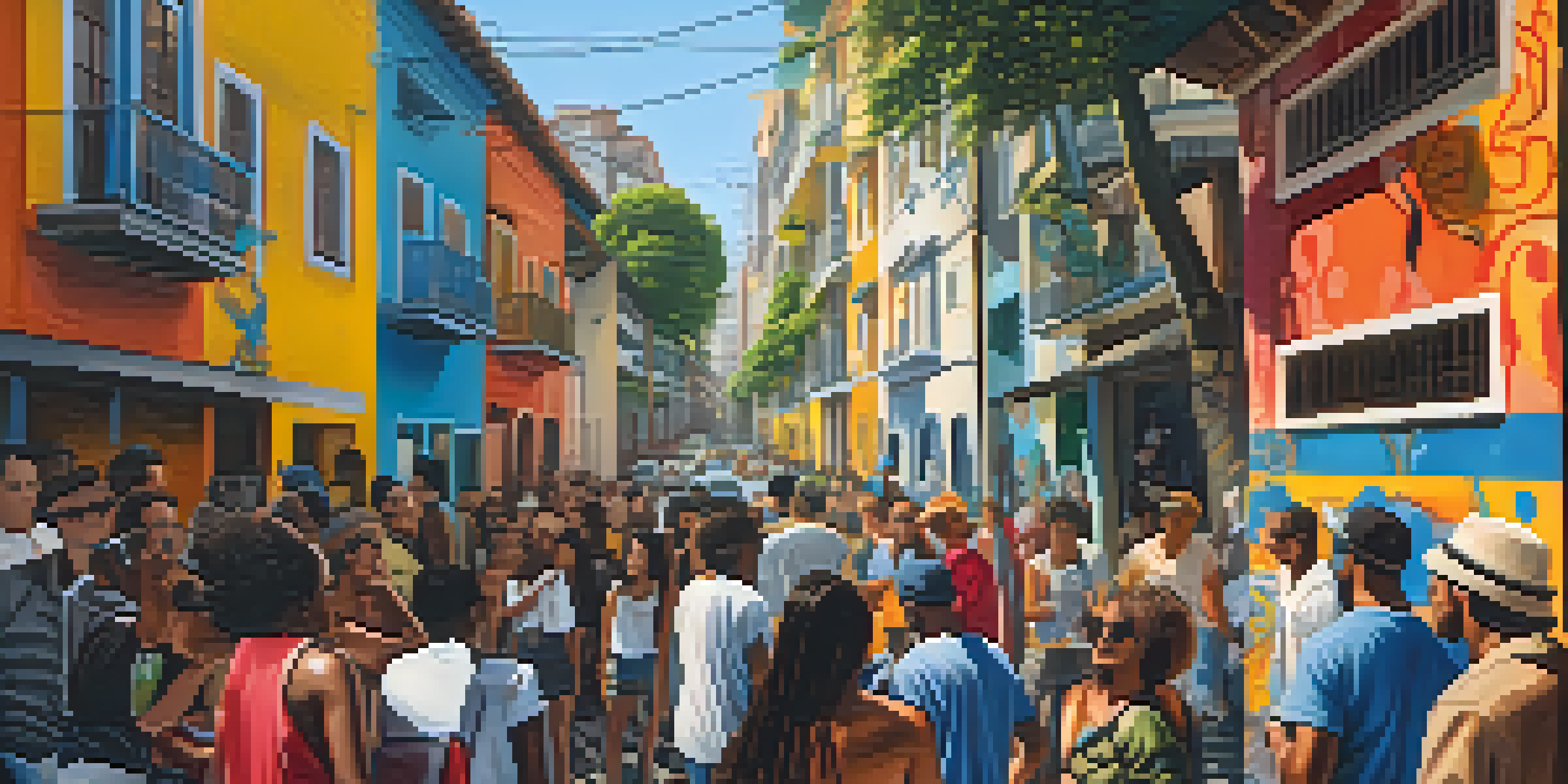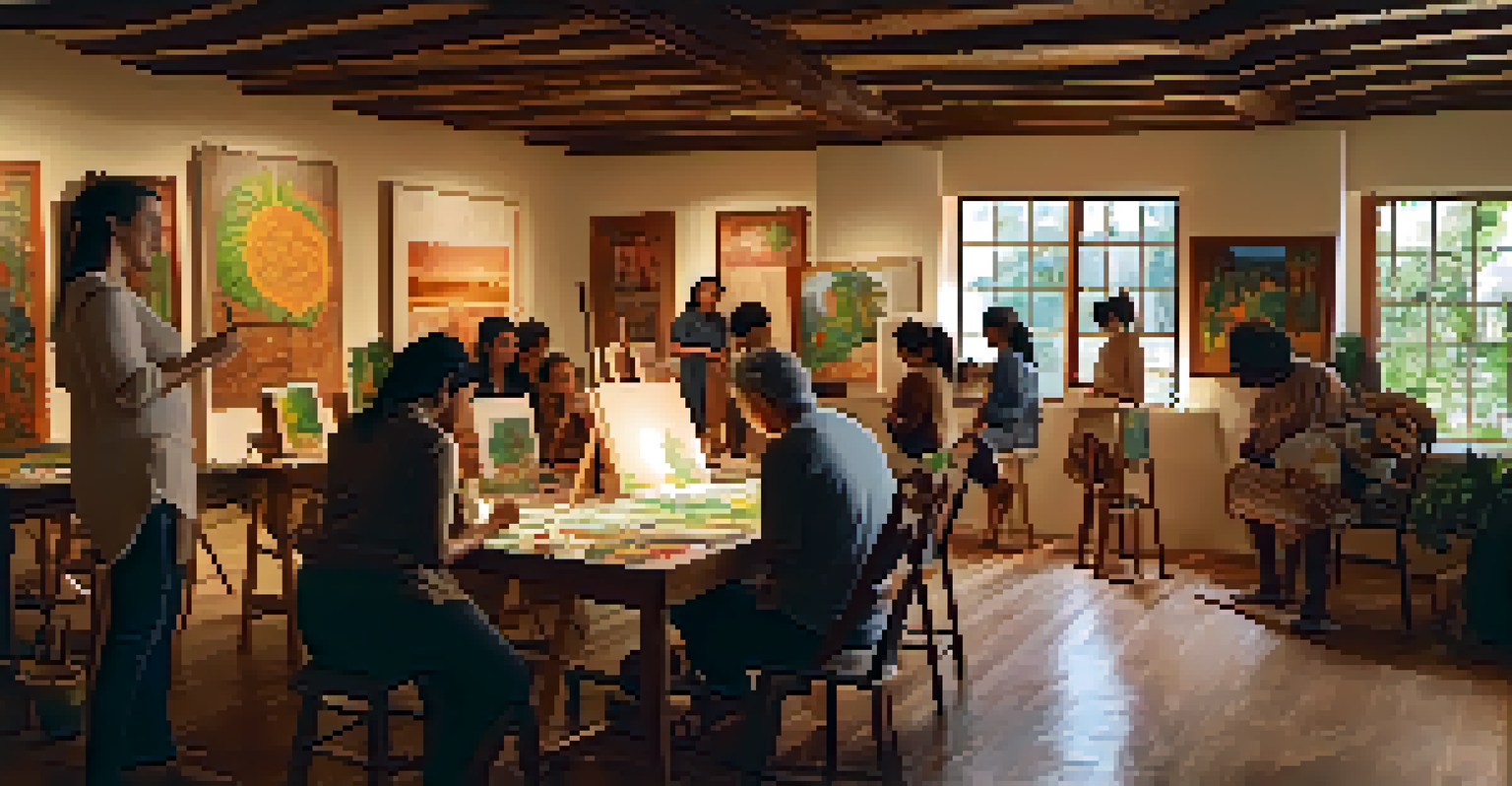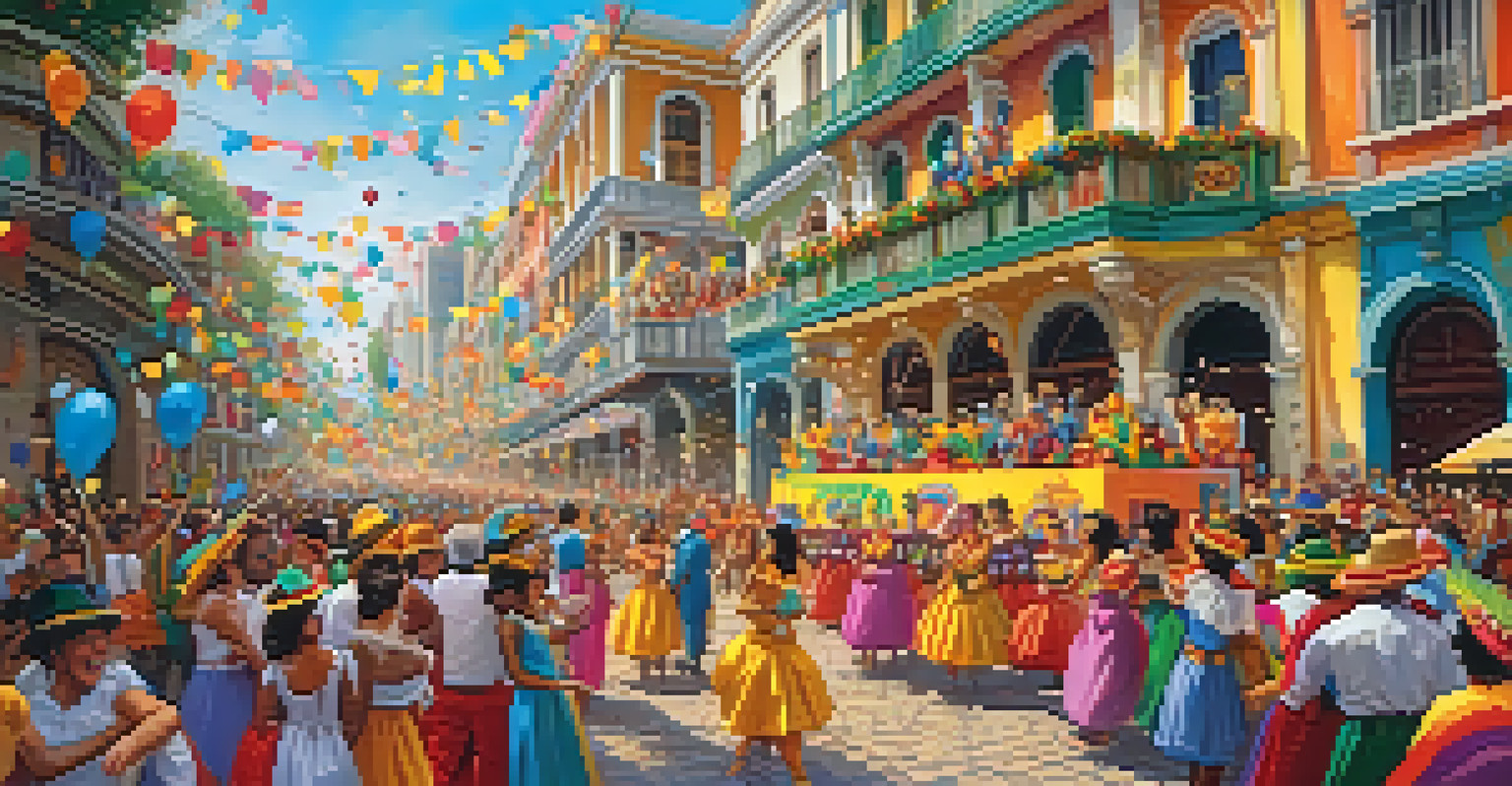Art and Culture: Engaging with Brazilian Artists

The Heartbeat of Brazil: Understanding Its Artistic Roots
Brazil's art scene is as diverse as its people, rooted in a rich tapestry of cultural influences. From indigenous traditions to colonial legacies, every brushstroke tells a story of resilience and creativity. Engaging with Brazilian artists allows us to experience this vibrant history firsthand, often revealing deeper connections to the land and its communities.
Art is the most beautiful of all lies.
Art in Brazil often reflects the societal issues faced by its people, making it a mirror of the nation's struggles and triumphs. For example, the works of renowned artist Vik Muniz use everyday materials to highlight social disparities, encouraging viewers to see beauty in the mundane. This blend of artistry and activism is a hallmark of Brazilian culture, inviting engagement beyond mere appreciation.
As we delve into Brazilian art, we not only learn about the techniques and styles but also the narratives behind them. Each artist provides a unique perspective that enriches our understanding of Brazil’s cultural identity. By engaging with these artists, we actively participate in a dialogue that transcends borders and connects us to global experiences.
Meet the Trailblazers: Influential Brazilian Artists to Know
Brazil boasts a plethora of influential artists who have shaped both local and global art scenes. Icons like Tarsila do Amaral brought modernism to Brazil, infusing her works with aspects of Brazilian identity, particularly in her masterpiece 'Abaporu'. This painting not only influenced the modernist movement but also inspired the formation of the Antropofagia movement, which sought to blend different cultural elements.

In contemporary art, artists like Beatriz Milhazes and her vibrant, geometric compositions showcase the intersection of traditional and modern influences. Milhazes’ works reflect the rhythms of Brazilian music and the country's colorful landscapes, inviting viewers into a joyful experience. Engaging with these artists offers a glimpse into how Brazil’s past continues to inform its artistic present.
Diverse Roots of Brazilian Art
Brazilian art reflects a rich tapestry of cultural influences, showcasing resilience and creativity through its diverse artistic expressions.
Additionally, street art has emerged as a powerful form of expression in Brazil, with artists like Os Gêmeos gaining international acclaim. Their murals often tell stories of urban life and social issues, making art accessible to everyone. Exploring their works not only enriches our understanding of contemporary Brazilian culture but also highlights the vital role of public art in societal conversations.
Artistic Movements: From Modernism to Contemporary Trends
Brazil has been home to various artistic movements, each reflecting the country's evolving identity. Modernism, which gained traction in the early 20th century, sought to break away from European influences and instead celebrated Brazilian culture. This movement laid the groundwork for future generations of artists to explore their own narratives and styles.
Every artist dips his brush in his own soul, and paints his own nature into his pictures.
As we transition into contemporary art, we see a fascinating blend of traditional techniques and modern themes. Brazilian artists today are increasingly using technology and new media to challenge the status quo, inviting audiences to engage in new ways. This evolution demonstrates how art remains a dynamic force, continuously responding to societal changes.
Understanding these movements helps us appreciate how Brazilian artists draw from their cultural heritage while addressing contemporary issues. By engaging with these artistic trends, we gain insights into the complexities of Brazilian society, making our connection with the art even more profound. This journey through time enriches our experience and understanding of Brazil's vibrant art scene.
Cultural Festivals: Celebrating Brazilian Arts Together
Cultural festivals in Brazil serve as vibrant showcases for artists and their work, drawing locals and visitors alike. Events like the São Paulo Art Biennial highlight contemporary art, bringing together talents from around the globe. These festivals create an immersive experience, allowing attendees to engage directly with artists, attend workshops, and participate in discussions.
Moreover, festivals such as Carnival not only celebrate music and dance but also include visual arts that reflect Brazil's cultural diversity. Artists often create elaborate floats and costumes that embody their artistic vision, turning the streets into a living gallery. This unique blend of performance and visual art fosters a sense of community and cultural pride.
Influential Artists & Movements
Key artists like Tarsila do Amaral and modern street art movements highlight how Brazil's unique identity shapes both local and global art scenes.
Engaging with these festivals allows us to experience the pulse of Brazilian culture firsthand. They present an opportunity to meet artists, understand their motivations, and witness the power of art to unite people. By participating, we become part of a larger narrative that celebrates creativity and cultural expression in all its forms.
Local Art Galleries: Discovering Hidden Gems
While major art institutions are essential, local galleries across Brazil offer a more intimate glimpse into the artistic landscape. These spaces often feature emerging artists and experimental works that challenge conventional norms. By visiting these galleries, we can discover hidden gems that reflect the unique voices of their communities.
For instance, galleries in neighborhoods like Vila Madalena in São Paulo are filled with vibrant street art and contemporary installations. These spaces often host events that encourage community engagement, such as artist talks and workshops, where visitors can interact directly with creators. This grassroots approach to art fosters a sense of belonging and connection.
Exploring local galleries not only supports artists but also enhances our appreciation for the diversity within Brazilian art. Each visit presents an opportunity to learn about different techniques, themes, and cultural influences. By engaging with these spaces, we deepen our understanding of Brazil's artistic identity and its ongoing evolution.
Art Education: Learning from Brazilian Artists
Engaging with Brazilian artists goes beyond mere admiration; it also involves learning from them. Many artists offer workshops and classes that provide hands-on experience with various techniques and media. These educational opportunities allow participants to explore their creativity while gaining insights into the artistic process.
For example, attending a workshop led by a local painter might reveal the traditional methods used in Brazilian folk art, blending storytelling with visual expression. This immersive experience not only enhances our skills but also deepens our connection to Brazilian culture. It’s a chance to experience the art form in a personal and meaningful way.
Art Education & Community Engagement
Workshops and local galleries provide opportunities for learning and connection, fostering a deeper appreciation for Brazilian culture and artistry.
Moreover, art education fosters a greater understanding of the cultural context behind the work. By learning directly from artists, we gain valuable perspectives on their motivations and the societal issues they address. This engagement enriches our experience, turning us from passive observers into active participants in the vibrant world of Brazilian art.
The Global Impact of Brazilian Art and Culture
Brazilian art has made significant waves on the global stage, influencing artists and movements worldwide. The unique blend of cultural elements found in Brazilian art resonates with a diverse audience, making it a vital part of contemporary discussions about identity and social justice. This international recognition highlights the importance of engaging with Brazilian artists and their works.
Furthermore, as artists collaborate with their global counterparts, they create a rich dialogue that transcends geographical boundaries. These exchanges not only enrich the artists' practices but also invite audiences to consider broader themes of unity and cultural exchange. Engaging with Brazilian art thus becomes a way to participate in a global conversation about creativity and its impact on society.

Ultimately, the global impact of Brazilian art serves as a reminder of the power of creativity to inspire change. By engaging with these artists, we contribute to a larger narrative that celebrates diversity and fosters understanding. This interconnectedness enriches our own experiences, allowing us to appreciate the beauty and complexity of cultures around the world.